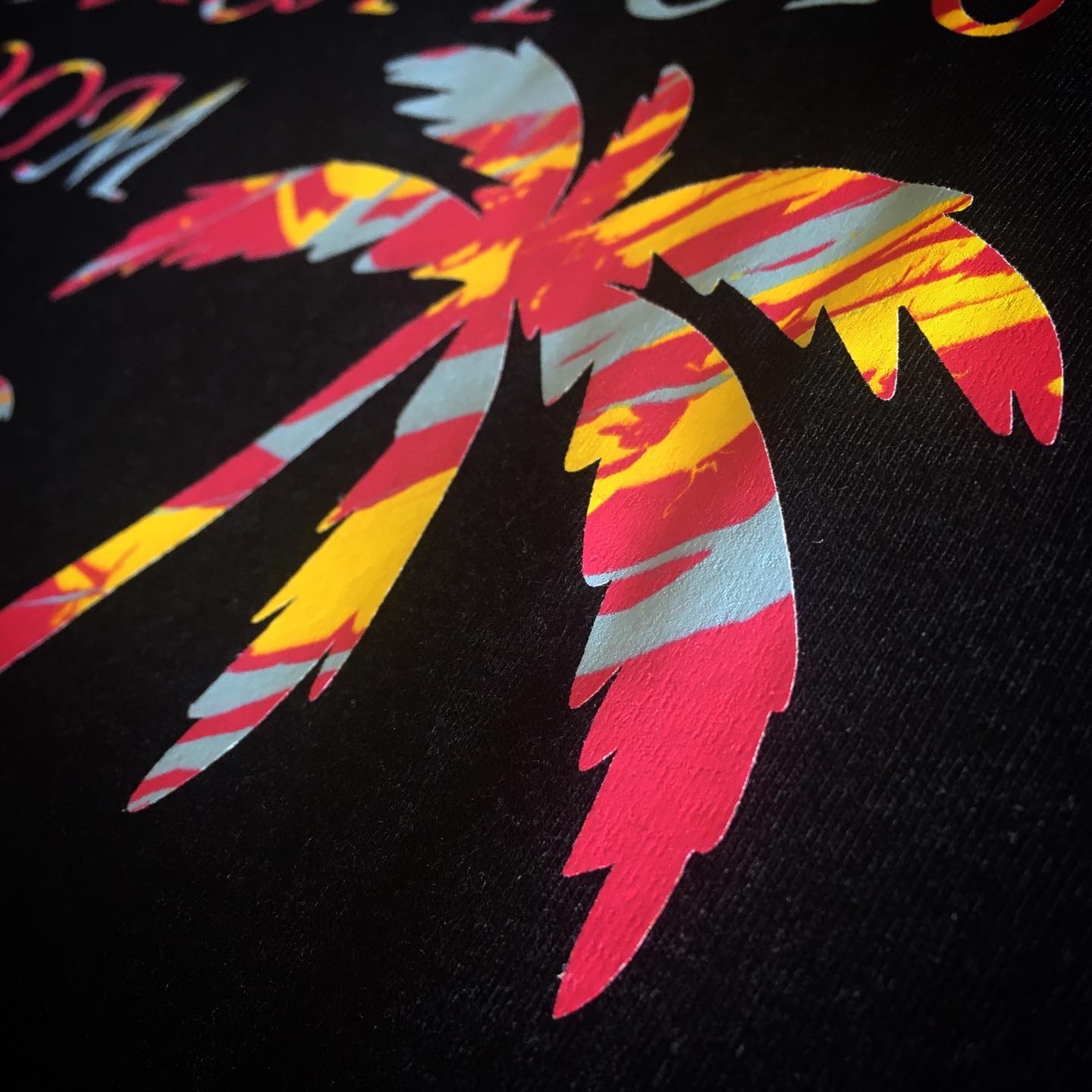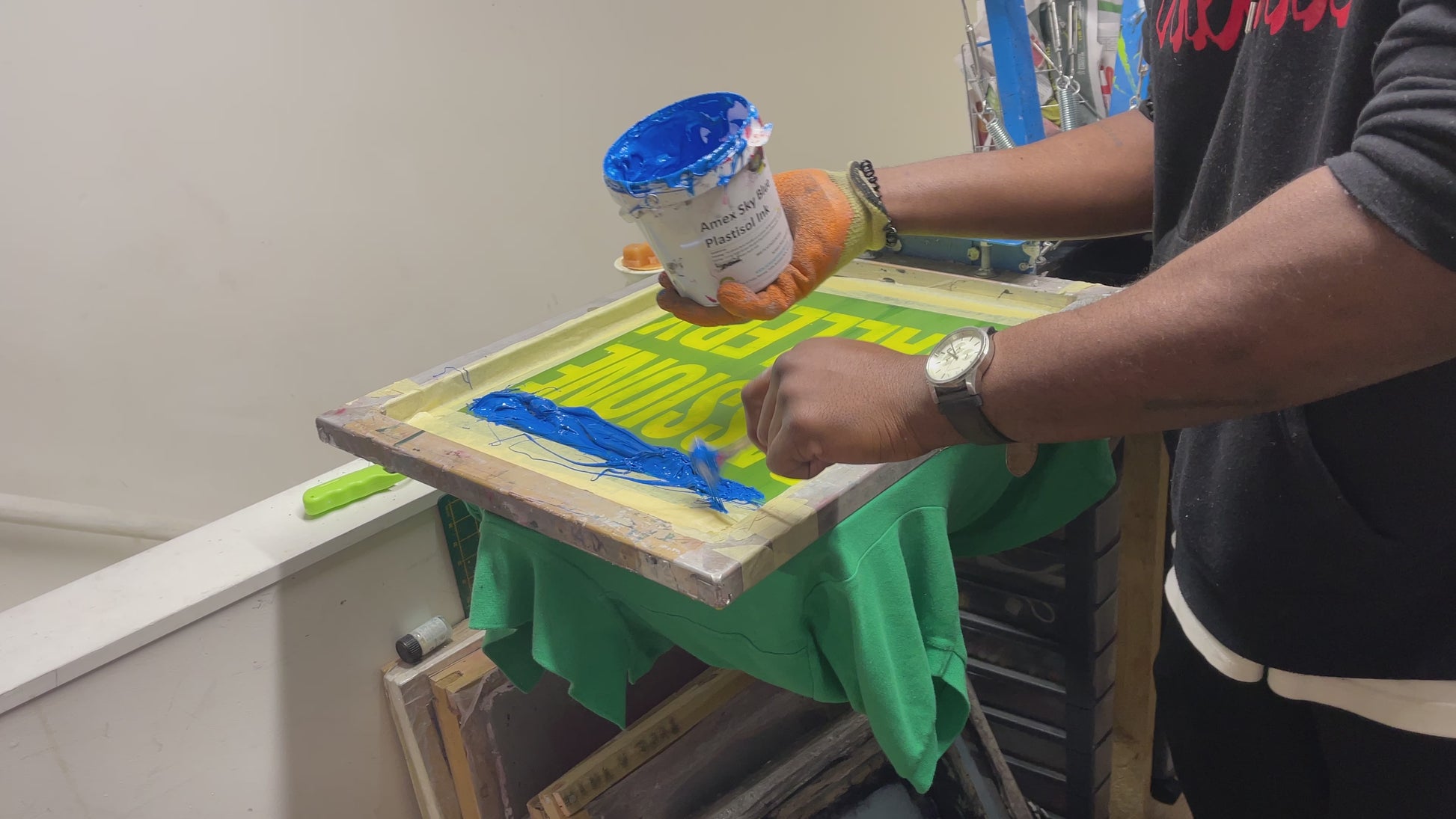Premium Screen Printing Kit for Business Startups
Premium Screen Printing Kit for Business Startups
Blog Article
Display Printing Uncovered: Everything You Need to Find Out About Tee and Garment Printing Techniques
Display printing is a fascinating method that combines art with method, providing countless opportunities for creativity. Prepared to explore the crucial aspects that make display publishing an art type?
The Fundamentals of Display Printing: How It Functions
When you dive right into display printing, you'll find it's both an art and a science. At its core, screen printing involves producing a pattern, or display, that allows ink to pass through only in details areas.
Following, you'll mix your inks and prepare your printing surface area. Placement the screen over the material, after that use a squeegee to push ink via the display onto the garment. This process calls for precision, as you desire clear, vibrant prints. After printing, you'll heal the ink with warm, guaranteeing it sticks to the fabric and lasts through cleans. Each step is crucial, and mastering them will certainly raise your display printing skills, changing basic garments into unique, meaningful pieces.
Sorts Of Screen Printing Methods
As soon as you grasp the fundamentals of screen printing, it's time to explore the numerous strategies that can raise your styles. One prominent approach is conventional screen printing, where ink is pushed with a stenciled screen. This method is excellent for strong, vivid colors. There's water-based ink printing, which supplies a softer feeling and is green, but it requires a different method to healing.
An additional alternative is plastisol printing, understood for its durability and vibrant colors, making it a preferred for many brands. Experiment with halftone printing to develop gradient effects and detailed styles.
Necessary Tools for Screen Printing
To accomplish spectacular lead to screen printing, having the right equipment is fundamental. Initially, you'll require a sturdy screen printing frame, which holds the mesh that moves your style onto the garment. Next, spend in top notch mops; these are important for applying ink uniformly across the display. You'll additionally require a great direct exposure unit to produce your displays, as well as a washout cubicle for cleansing them after use. A reliable warm resource, like a conveyor clothes dryer or heat press, is vital for healing your prints to guarantee long life. Do not forget an appropriate workspace, outfitted with tables and storage for your products. Protective gear, such as masks and gloves, will maintain you safe from chemicals and inks. With the right devices, you'll be well on your method to producing professional-quality prints.
Choosing the Right Inks and Materials
When choosing inks and materials for screen printing, you need to consider the sort of ink that functions finest for your task. Think of material compatibility to ensure your designs look fantastic and last long. Additionally, discover environment-friendly ink options to make your printing procedure a lot more lasting.
Types of Display Inks
Choosing the appropriate screen ink is vital for achieving vivid, long lasting prints that satisfy your task's requirements. There are several kinds of screen inks to examine. Specialty inks, such as metal or glow-in-the-dark, can add unique impacts to your designs.

Material Compatibility Considerations
Recognizing textile compatibility is important for accomplishing top quality screen prints, especially since various products react distinctly to numerous inks. When choosing inks, take into consideration the material kind-- cotton, polyester, or blends. For cotton, water-based inks function well, supplying soft qualities and breathability. Polyester, on the other hand, commonly requires plastisol inks for far better bond and lively colors. You could need to make use of a mix of both types if you're publishing on blends. Always test your inks on example fabric to assure they adhere correctly and keep color integrity. In addition, bear in mind that material weight and texture can influence the last result, so choosing the appropriate ink and product combination is essential for your task's success.
Eco-Friendly Ink Options
Eco-friendly inks are ending up being a preferred selection for display printers that desire to minimize their environmental impact while preserving top quality. When selecting inks, consider water-based inks, which are much less damaging and less complicated to clean up contrasted to standard solvents.
In addition, search for inks made from renewable energies, such as soy or vegetable-based options. By choosing the right inks and products, you'll not just produce sensational designs however also add to an extra lasting printing procedure. Make the switch, and your prints will show your commitment to the atmosphere!
Preparing Your Layout for Screen Printing

Submit Format Demands
To ensure your design looks dynamic and sharp on textile, you'll need to pay close interest to submit style demands for screen printing. Make certain your layout has a transparent background to avoid undesirable white edges on your prints. Maintain color settings in mind; CMYK is typical for display printing, so convert your RGB develops accordingly.
Shade Splitting Up Methods
Color separation is an important step in preparing your style for screen printing, and grasping it can considerably improve your print high quality. You'll need to damage your style into specific shades, as each color needs a separate display throughout printing. This accuracy not only assures precise color representation however likewise improves the printing procedure.
Resolution and Size
Attaining the most effective lead to display printing begins with assuring your style has the appropriate resolution and size. Ideally, your art work should go to the very least 300 DPI (dots per inch) for sharp, clear prints. If you utilize lower resolution, your final item may look less than professional and pixelated.
When it comes to dimension, consider the dimensions of your print location. Layout your art work to match the last print size, preferably creating it in the real measurements you'll be printing. This means, you'll avoid any kind of unexpected scaling problems.
Constantly examine your style in both vector and raster layouts. Vector graphics can be scaled without losing top click to investigate quality, making them perfect for display printing. Preparing properly will ensure your layout looks incredible on every garment!
Step-by-Step Display Printing Process
Screen printing is a dynamic process that allows you to produce vibrant layouts on various surfaces. To get begun, you'll need a display, solution, and your selected ink.
After cleaning out the unexposed solution, your screen prepares. Set it up on your printing surface and straighten your garment underneath it. Put ink onto the display and use a squeegee to press the ink through the pattern onto the material. Lift the display very carefully and let the print completely dry. Ultimately, treat the ink making use of warmth to ensure durability. That's it! You've effectively screen printed your design.
Tips for Effective Display Printing Projects
While you're diving into your display printing tasks, bear in mind that prep work is vital to success. Start by gathering all your materials-- inks, displays, squeegees, and garments. A tidy office assists protect against undesirable mistakes, so neat up prior to you begin.
Next, validate your art work is high-resolution and appropriately sized for your garment. Check your display for correct direct exposure and clean it thoroughly to prevent smudges. When blending your inks, follow the supplier's standards to accomplish the ideal consistency.
During printing, apply also pressure with your squeegee for regular results. Don't hurry; take your time to verify each print satisfies your criteria. After printing, allow your garments dry entirely prior to managing or packaging them.
Last but not least, always maintain an example of your work for future reference. This method, you can assess your progress and improve your strategies in time. Delighted printing!

Regularly Asked Concerns
The length of time Does It Take to Set up a Display Printing Job?
Establishing up a screen printing job usually takes around half an hour to an hour. You'll prepare the screens, mix inks, and adjust journalism. The time differs based on intricacy and experience, so stay arranged!
Can I Publish on Various Textile Types Utilizing the Very Same Strategy?
Yes, you can publish on various textile types utilizing the very same method, however you'll require to adjust your settings and inks. Some textiles absorb ink in different ways, so exploring assurances the very best results for every material.
What Are Common Blunders to Prevent in Screen Printing?
When display printing, prevent common blunders like making use of the wrong ink, overlooking appropriate exposure times, or avoiding pre-press checks. Always evaluate your arrangement and preserve tidy screens to guarantee high quality outcomes each time.
Exactly How Can I Properly Tidy and Keep My Display Printing Tools?
To correctly clean and maintain your display printing devices, you should on a regular basis wash displays with suitable solvents, examine squeegees for wear, and assure all devices are saved dust-free and completely dry. Consistency enhances and avoids pricey repairs efficiency.
Is Display Printing Eco-friendly Contrasted to Other Techniques?
Display printing can visit here be much more environmentally friendly than various other methods, specifically if you use water-based inks and eco-conscious products. By choosing lasting materials and practices, you lower waste and lessen your influence on the world.
Screen Printing Web Site Uncovered: Everything You Required to Know Concerning Tee and Garment Printing Strategies
At its core, display printing entails developing a pattern, or display, that enables ink to pass through just in specific areas. Position the display over the textile, then utilize a squeegee to press ink through the display onto the garment. One prominent technique is traditional screen printing, where ink is pressed through a stenciled screen.When choosing inks and materials for screen printing, you need to take into account the kind of ink that functions best for your project.
Report this page